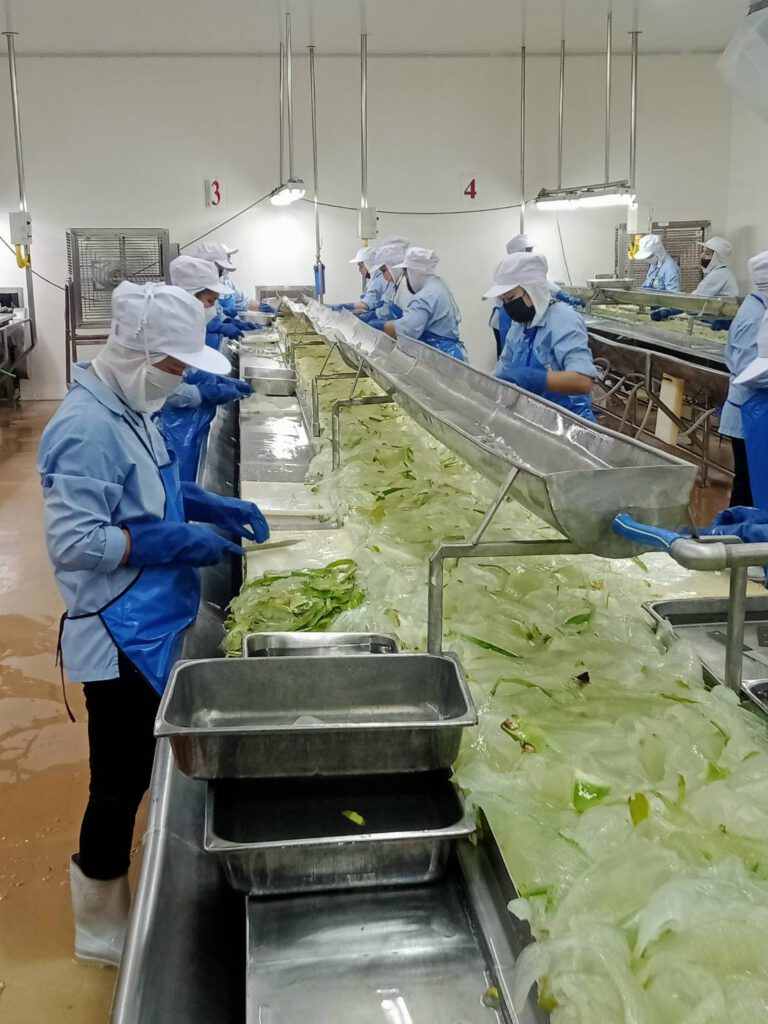About Us
About Us
We are an agricultural product manufacturing company, leveraging in-depth expertise and commitment to standard practices to deliver high-quality, healthy, and safe-for-consumption products to businesses. We are committed to producing and delivering high-quality processed products to our customers and to attracting huge value to local nature’s bounties.
We were established in 1988 with a registered capital of 100 million baht with over 100 employees working towards becoming the foremost industry leader in the production and supply of premium aloe vera and agricultural products. Our factory is at the heart of Pranburi local community in Prachupkhirikhan over 146 rai.
Contact us today to discuss your requirements and let us create your ideal agricultural product together.


Vision
We are committed to being a leading, quality and safe agricultural processing producer in accordance with international standards.
Mission
- To produce quality products that meet customer satisfaction and are delivered on time
- Give importance to the development of human resources and production technology to reach
the international level. - Conduct business in order to seriously generate returns for investors and employees in the
organization.
What We Do

At SIFCO, we take pride in being an end-to-end manufacturing and processed agricultural product company that offers made-to-order solutions. With our extensive expertise and specialized facilities, we bring you a diverse range of exquisite Southeast Asian tropical fruits and vegetables, tailored to meet your unique requirements. Our extensive processes allow us to cater to different requirements, whether it’s made-to-order products or our own brand, Krajib. Under the Krajib brand, we offer processed fruits and vegetables in perfect sizes for household consumption and individual eating.
For industrial orders:
- Pouch bags
- Polyethylene Bags
- Aseptic drums
For retail orders:
- Plastic Jar
- Can
- Small Pouches
- Plastic Cups
Our Core Values
Integrity
The company was founded on the core principle of integrity. We are credible, we work to earn the confidence of our customers by maintaining best practices always.
Quality
Quality is the benchmark of all our products. We are committed to delivering the best quality to customers thereby establishing ourselves as a company with a high reputation in the industry.
Trust
Our customer relationships are built on trust and mutual benefit, with a focus on longterm partnerships. We build trust through our good standard of production and commitment to best practices.
Innovation
Innovation is the value to leverage to be at our best always, adapt to the latest development in the processed fruits and vegetables industry, and maintain an advantage over our competitors.
Excellence
We do everything with excellence in mind. To us, excellence is a win-win; customers get the best products to drive sales and profits while we also become a popular brand in the market.
Professionalism
We are professionals, and we deliver our products and services in a manner that befits the international standard. Each product is produced in a clean and hygienic environment
Certificates of quality
Quality certificates verify compliance with standards, ensuring reliable products and customer satisfaction. They are official documents issued by authorized organizations and provide evidence of meeting established criteria. These certificates build trust, facilitate trade, and assure consumers of rigorous quality checks. By displaying certifications such as ISO or FDA approvals, businesses demonstrate their commitment to quality and gain a competitive edge
Facility and research

Different production process

Quality lab


